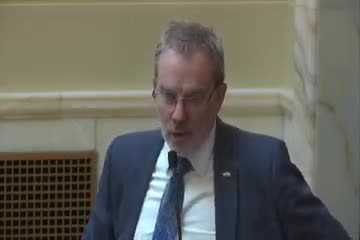State Board of Education urged to integrate success sequence into secondary curriculum
February 02, 2024 | 2024 Utah Legislature, Utah Legislature, Utah Legislative Branch, Utah

This article was created by AI summarizing key points discussed. AI makes mistakes, so for full details and context, please refer to the video of the full meeting. Please report any errors so we can fix them. Report an error »

During the recent government meeting on February 2, 2024, Utah lawmakers discussed a joint resolution aimed at integrating the "success sequence" into the state's secondary education curriculum. This initiative, developed in collaboration with the State Board of Education and the newly established Office of Families, seeks to address poverty reduction through educational strategies.
The success sequence is based on evidence from various longitudinal studies, indicating that individuals who follow a specific sequence of life choices—such as completing education, securing stable employment, and marrying before having children—have a significantly lower chance of living in poverty. According to the data presented, adhering to this sequence reduces the likelihood of poverty to just 3%. In contrast, failing to follow these steps can increase the risk of poverty by up to 1,000%, raising the chance to around 30%.
The resolution proposes that the State Board of Education explore ways to incorporate education about the success sequence into the curriculum, thereby equipping students with knowledge that could potentially alter their life trajectories.
However, the discussion also highlighted concerns regarding the language used in promoting the success sequence. Senator Reby expressed reservations about the emphasis on marriage as a key component of success. She argued that while marriage can contribute to stability, it should not be presented as the sole pathway to success. Reby emphasized the importance of recognizing broader constructs, such as financial stability and healthy relationships, rather than focusing narrowly on marriage. This perspective aims to ensure that the initiative is inclusive and does not alienate individuals who may not fit traditional definitions of success.
The meeting underscored the complexities of addressing poverty through education and the need for careful consideration of the messages conveyed to students. As lawmakers move forward with this resolution, the implications for educational policy and social support systems in Utah will be closely monitored. The next steps will involve collaboration with educational stakeholders to determine the best methods for integrating these concepts into the curriculum while maintaining an inclusive approach.
The success sequence is based on evidence from various longitudinal studies, indicating that individuals who follow a specific sequence of life choices—such as completing education, securing stable employment, and marrying before having children—have a significantly lower chance of living in poverty. According to the data presented, adhering to this sequence reduces the likelihood of poverty to just 3%. In contrast, failing to follow these steps can increase the risk of poverty by up to 1,000%, raising the chance to around 30%.
The resolution proposes that the State Board of Education explore ways to incorporate education about the success sequence into the curriculum, thereby equipping students with knowledge that could potentially alter their life trajectories.
However, the discussion also highlighted concerns regarding the language used in promoting the success sequence. Senator Reby expressed reservations about the emphasis on marriage as a key component of success. She argued that while marriage can contribute to stability, it should not be presented as the sole pathway to success. Reby emphasized the importance of recognizing broader constructs, such as financial stability and healthy relationships, rather than focusing narrowly on marriage. This perspective aims to ensure that the initiative is inclusive and does not alienate individuals who may not fit traditional definitions of success.
The meeting underscored the complexities of addressing poverty through education and the need for careful consideration of the messages conveyed to students. As lawmakers move forward with this resolution, the implications for educational policy and social support systems in Utah will be closely monitored. The next steps will involve collaboration with educational stakeholders to determine the best methods for integrating these concepts into the curriculum while maintaining an inclusive approach.
View full meeting
This article is based on a recent meeting—watch the full video and explore the complete transcript for deeper insights into the discussion.
View full meeting

